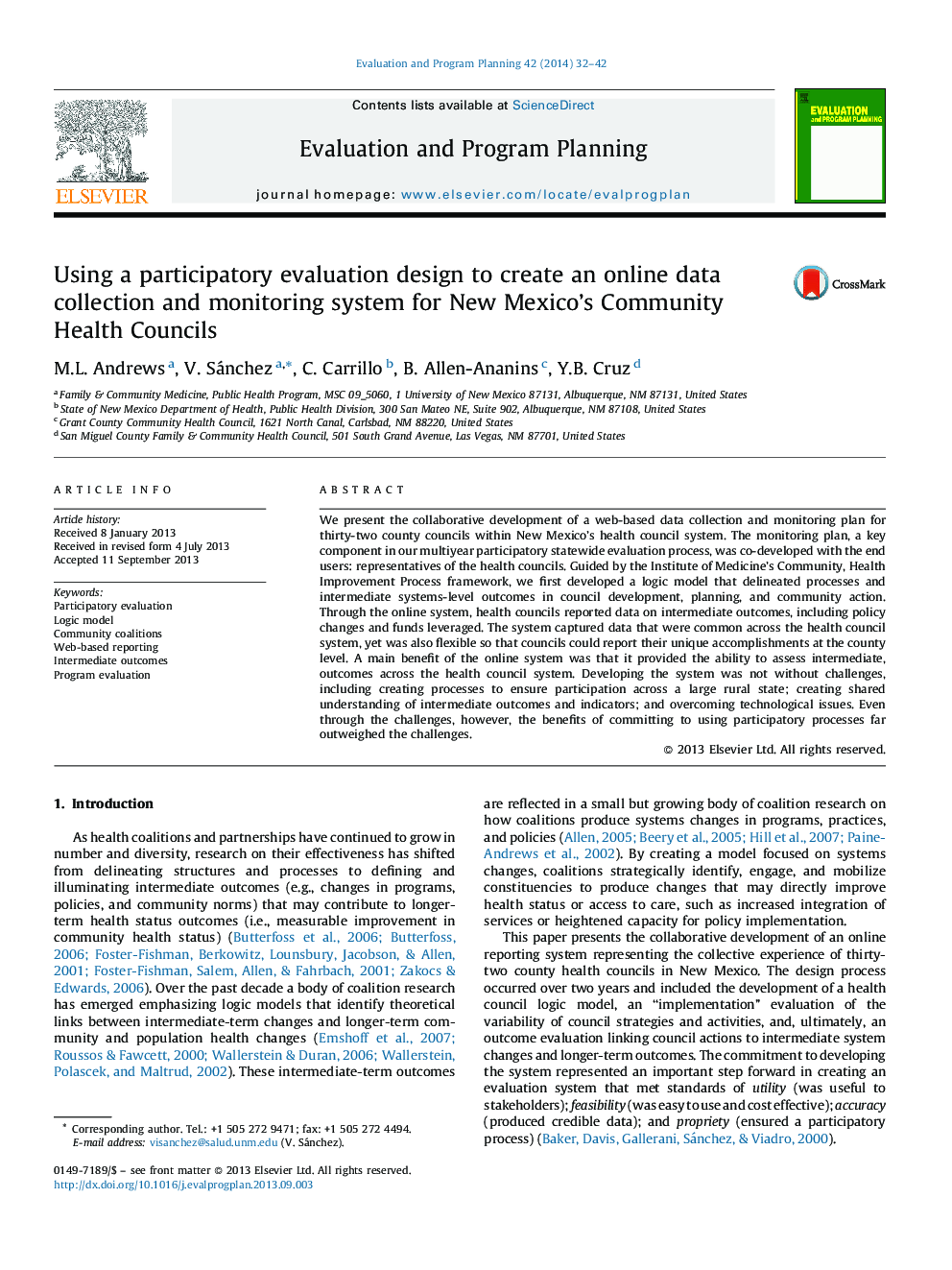| Article ID | Journal | Published Year | Pages | File Type |
|---|---|---|---|---|
| 321356 | Evaluation and Program Planning | 2014 | 11 Pages |
•Project was the first attempt to capture the actions and impact of health councils across New Mexico.•Logic model showed links among structure, processes, and outcomes of council system.•Reporting system was a key component of statewide participatory evaluation.•Participatory process facilitated a common understanding of the evaluation process.•Evaluation allowed councils to see collective impacts.
We present the collaborative development of a web-based data collection and monitoring plan for thirty-two county councils within New Mexico's health council system. The monitoring plan, a key component in our multiyear participatory statewide evaluation process, was co-developed with the end users: representatives of the health councils. Guided by the Institute of Medicine's Community, Health Improvement Process framework, we first developed a logic model that delineated processes and intermediate systems-level outcomes in council development, planning, and community action. Through the online system, health councils reported data on intermediate outcomes, including policy changes and funds leveraged. The system captured data that were common across the health council system, yet was also flexible so that councils could report their unique accomplishments at the county level. A main benefit of the online system was that it provided the ability to assess intermediate, outcomes across the health council system. Developing the system was not without challenges, including creating processes to ensure participation across a large rural state; creating shared understanding of intermediate outcomes and indicators; and overcoming technological issues. Even through the challenges, however, the benefits of committing to using participatory processes far outweighed the challenges.
